 ... 5, 7, 9, 11, 13, 15, &c. is an ascending series. ( 15, 13, 11, 9, 7, 5, 3, &c. is a descending series. The numbers which form the series are called the terms of the series. The first and last terms are the extremes, and the other terms are called... ... 5, 7, 9, 11, 13, 15, &c. is an ascending series. ( 15, 13, 11, 9, 7, 5, 3, &c. is a descending series. The numbers which form the series are called the terms of the series. The first and last terms are the extremes, and the other terms are called...  The North American Arithmetic: Part Third, for Advanced Scholars - Page 184by Frederick Emerson - 1834 - 328 pagesFull view The North American Arithmetic: Part Third, for Advanced Scholars - Page 184by Frederick Emerson - 1834 - 328 pagesFull view - About this book
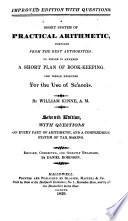 | William Kinne - 1829 - 246 pages
...numbers increase, they form an ascending series; but when they decrease, they form a descending series The numbers which form the series, are called the terms of the progression. Any three of the five following terms being given, the other two may readily be found.... | |
 | Daniel Adams - Arithmetic - 1830 - 294 pages
...common difference, they form a descending series. 3, 5, 7, 9, 11, 13, 15, &c. is an ascending series. The numbers which form the series are called the terms of the series. The first and last terms are the extremes, and the other terms are called the means. There are five things in arithmetical progression,... | |
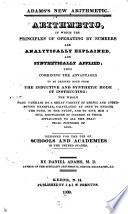 | Daniel Adams - Arithmetic - 1830 - 268 pages
...11, 13, 15, &c. is an ascending serie*. Anus, £ 15i 13, lti 9, 7, 5, 3) &c ;sa descending series. The numbers which form the series are called the terms of the series. The fast and last terms are the extremes, and the other terms are called the means. There are five things... | |
 | Daniel Adams - Arithmetic - 1831 - 276 pages
...^.*, ^c' *s an ascending series. ' ( 15, 13, 11, 9, 7, 5, 3, &c. is a descending series. The numbeis which form the series are called the terms of the series. The first and last terms are the extremes, and the other terms are called the means. There are five things in arithmetical progression,... | |
 | Daniel Adams - Arithmetic - 1831 - 276 pages
...^' ^-C' is an ascen^n9 series. ' I 15, 13, 11, 9, 7, 5, 3, &c. is a descending series. The numbeis which form the series are called the terms of the series. The first and last terms are the extremes, and the other terms are called the means. There are five things in arithmetical progression,... | |
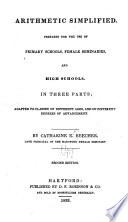 | Catharine Esther Beecher - Arithmetic - 1833 - 296 pages
...series is formed by a continual subtraction of 2, from each preceding figure. The figures that make up the series are called the terms of the series. The first and last terms are called the extremes, and the other terms, the means. From the above, it may be seen, that any term... | |
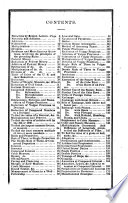 | John Rose - Arithmetic - 1835 - 192 pages
...9> 11> 13, 15, &c. is an ascending series, inus, ^ 15i lg u 9> 7) 5> 3j &c is a aesc<;ndjng. serieg The numbers which form the series are called the terms of the series. The first and last terms are called the extremes, and the other terms the means. There are five denominations in arithmetical... | |
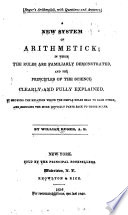 | William Ruger - Arithmetic - 1836 - 274 pages
...4, 6, 8, 10, 12, &c. is an ascending series, i nus, ^ 12^ t0^ gi 6^ ^ 2] &c, is a descending series. The numbers which form the series are called the TERMS of the pn> .gression. THE FIRST and LIST terms are the EXTREMES, and the othf r terms are called the MEANS.... | |
 | Daniel Adams - Arithmetic - 1837 - 274 pages
...15' ^c' *s an asceil^n9 series, "' ( 15, 13, 11, 9, 7, 5, 3, &c. is a descending series. The numbeis which form the series are called the terms of the series. The first and last terms are the extremes, and the other terms are called the means. There are five things in arithmetical-... | |
 | Frederick Emerson - Arithmetic - 1839 - 300 pages
...numbers, 1,2,3, 4, 5, 6, 7, 8, 9, form an ascending series, because they continually increase by 1; but 9, 8, 7, 6, &c. form a descending series, because...common difference. Therefore, when the first term and commoi: difference are given, the series may be continued to any length. For instance, let 1 be the... | |
| |